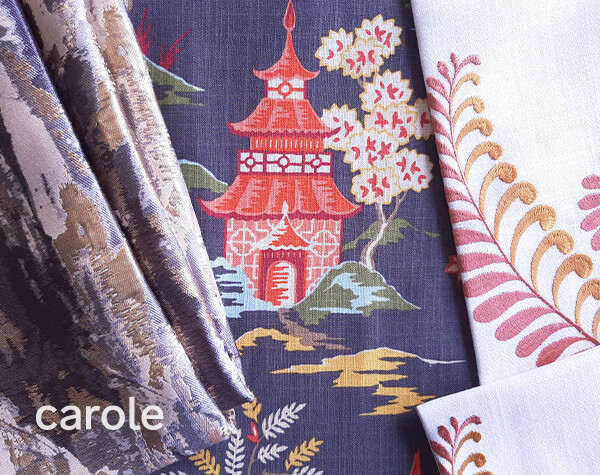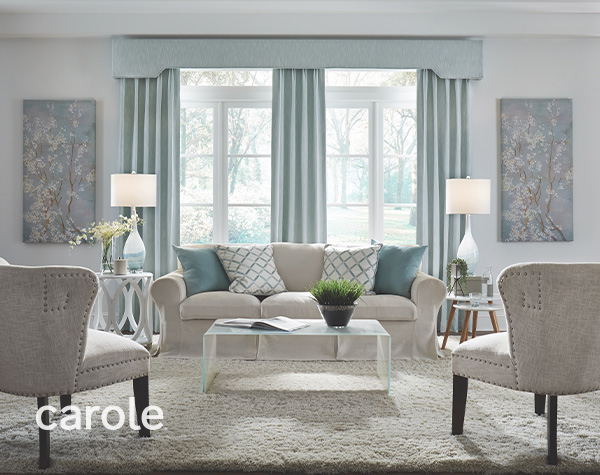
5 Ways To Make a Room Feel Bigger
August 2, 2021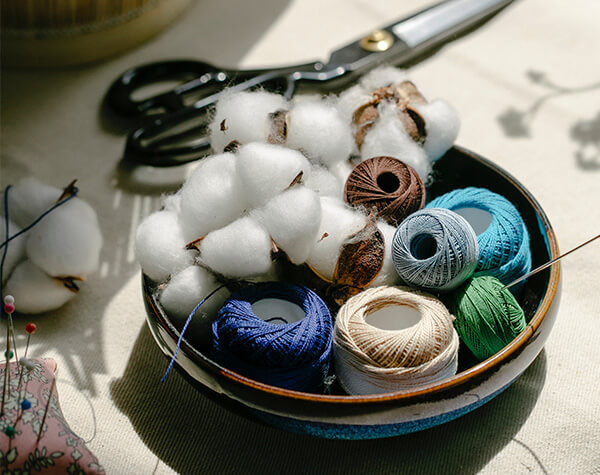
Fiber Content and Home Environments
September 14, 2021Selecting the Right Fabric: Part 1 of 3
Color and pattern attract us to the fabrics we want to use in our home. But properties of the fabric can make or break the success of your window treatment. What fibers were used? How were they constructed to make the fabric? Which window treatment style is best for my fabric? How does all this affect the way the fabric will look on the window when installed?
This three-part series covers how to match the right fabric to the right style of drapery or shade to ensure a successful design and a happy customer! The full series includes:
- What Does Fabric Construction Mean?
- Fiber Content and Home Environments
- Matching Fabric, Pattern and Window Treatment Style
What Does Fabric Construction Mean?
The construction process determines the fabric type. The combined characteristics of the fiber and the construction process establish the look and feel of the final fabric product. Understanding the fabric type can help you make educated choices. For the fabrics described below, fibers are made into yarns and yarns are woven into fabric.
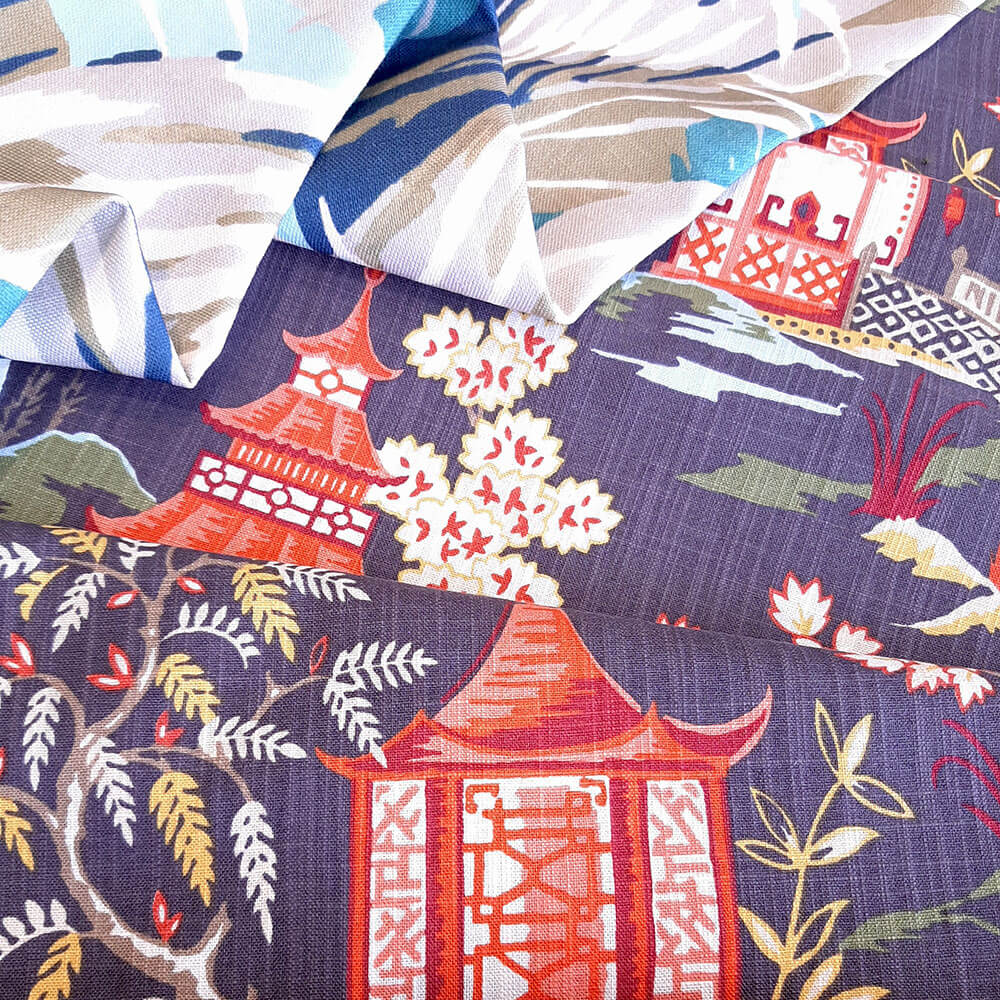
Top to bottom: Treehouse Lagoon (Carole Exclusive), Toji Garden Lacquer
Prints
Prints are patterns that are printed only on the front of the fabric; the back is unpatterned. This allows for a lot of color and pattern without the fabric being too thick or heavy.
Often printed on lighter grounds of cotton, polyester or linen blend fabric, the price points will vary based on the ground fabric.
Embroideries
Embroidered fabric combines stitching techniques and yarn types to create a unique style of fabric where an assortment of colors and textures can be incorporated into the pattern. Embroidery can be done on various ground colors and often commands a higher price point due to the amount of stitching.
Heavier stitching makes the fabric heavier so you must consider the type of drapery rod used to handle the additional weight. Embroideries are NOT recommended for upholstery!
Different yarn types and stitches create different embroidery looks:
- Satin Stitching - a refined, dressy look
- Dry Polyester/Cotton Stitching - a casual look
- Jute and Cord Stitching - a rustic, casual feel
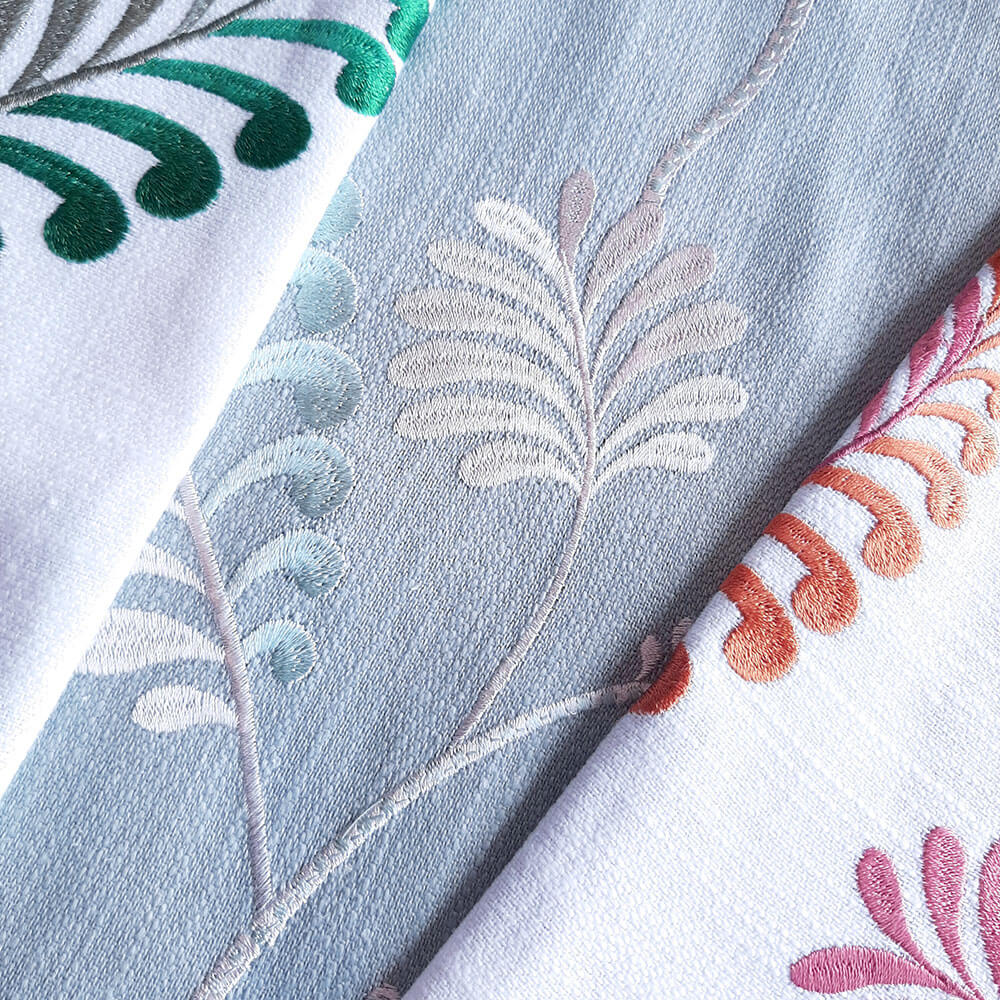
Left to right: Easy Breezy in the colors Spearmint, Powder Blue, Sorbet
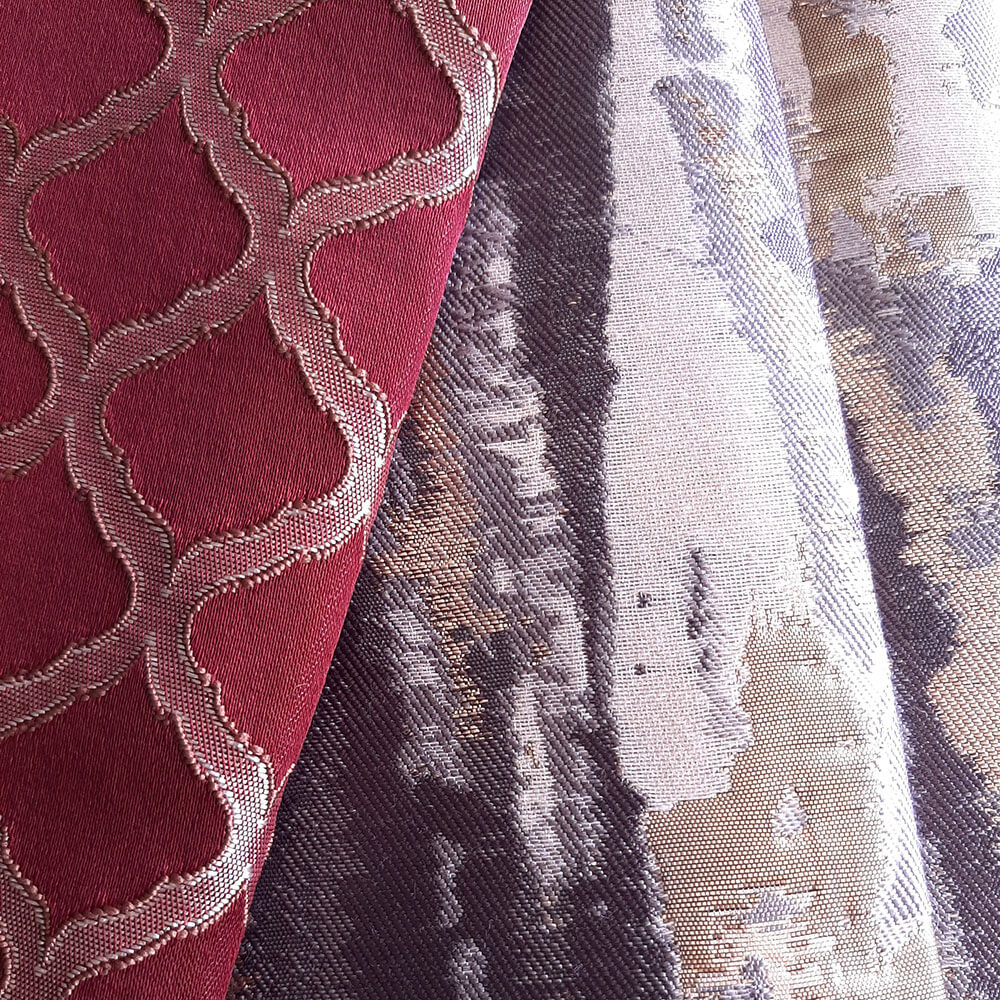
Left to right: Bottled Up Merlot, Artistic License Caramel
Jacquards
The pattern in this fabric is achieved by weaving yarns into the fabric, making the pattern visible on both the front and back. Texture and depth can be easily achieved through yarn selection. Jacquards are often multipurpose weight and make up into a wide variety of products beautifully.
However, more color requires more yarn and the fabric may be heavier and thicker, causing it to flare or not hold pleats tightly. Consider incorporating Memory Stitch into draperies made with jacquard fabrics.
Solids
These fabrics are woven throughout with the same yarn in a single color. Solids are great for adding bold color and can help anchor a room that already has a lot of color in furnishings. Just pull a color from a focal point such as artwork or a rug and build from there.
Solid colors pair well with patterned fabrics so layering shades with draperies, side panels or top treatments can create a very successful design.
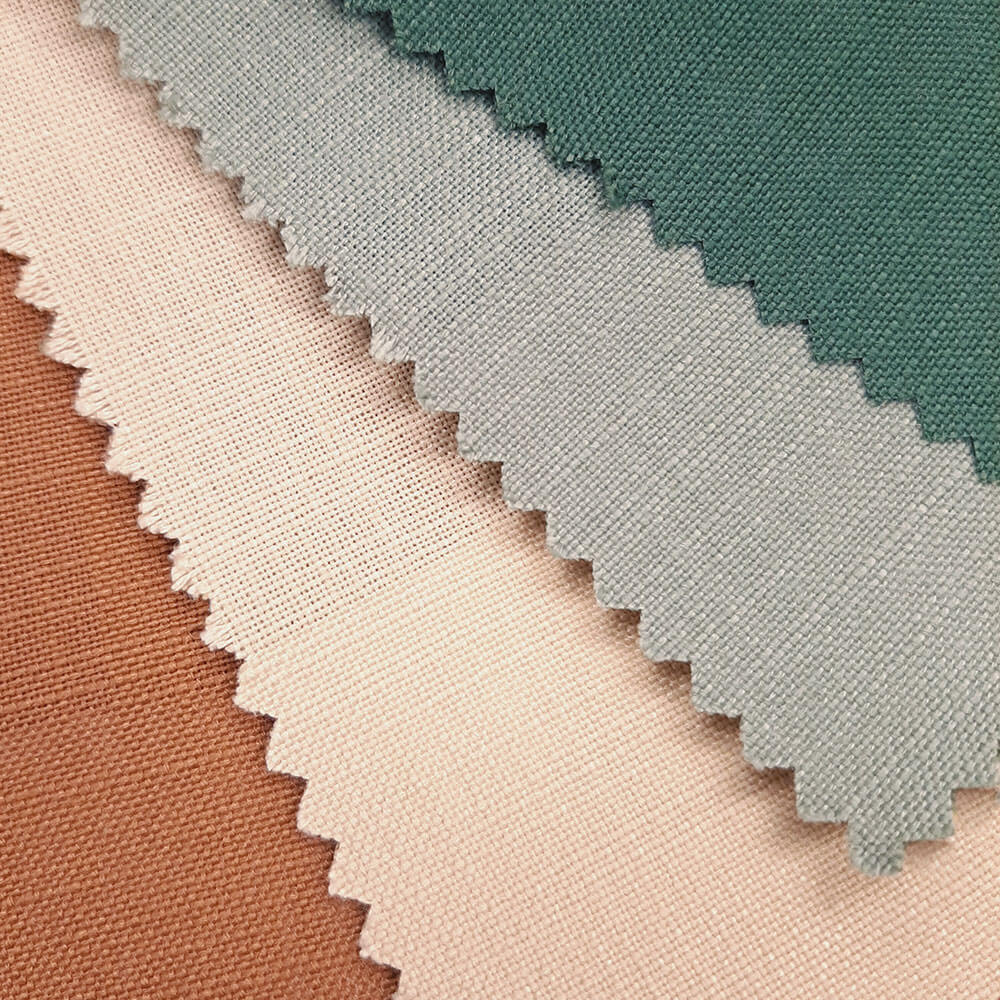
Left to right: Fundamental in the colors Brick, Sand, Leaf, Pine
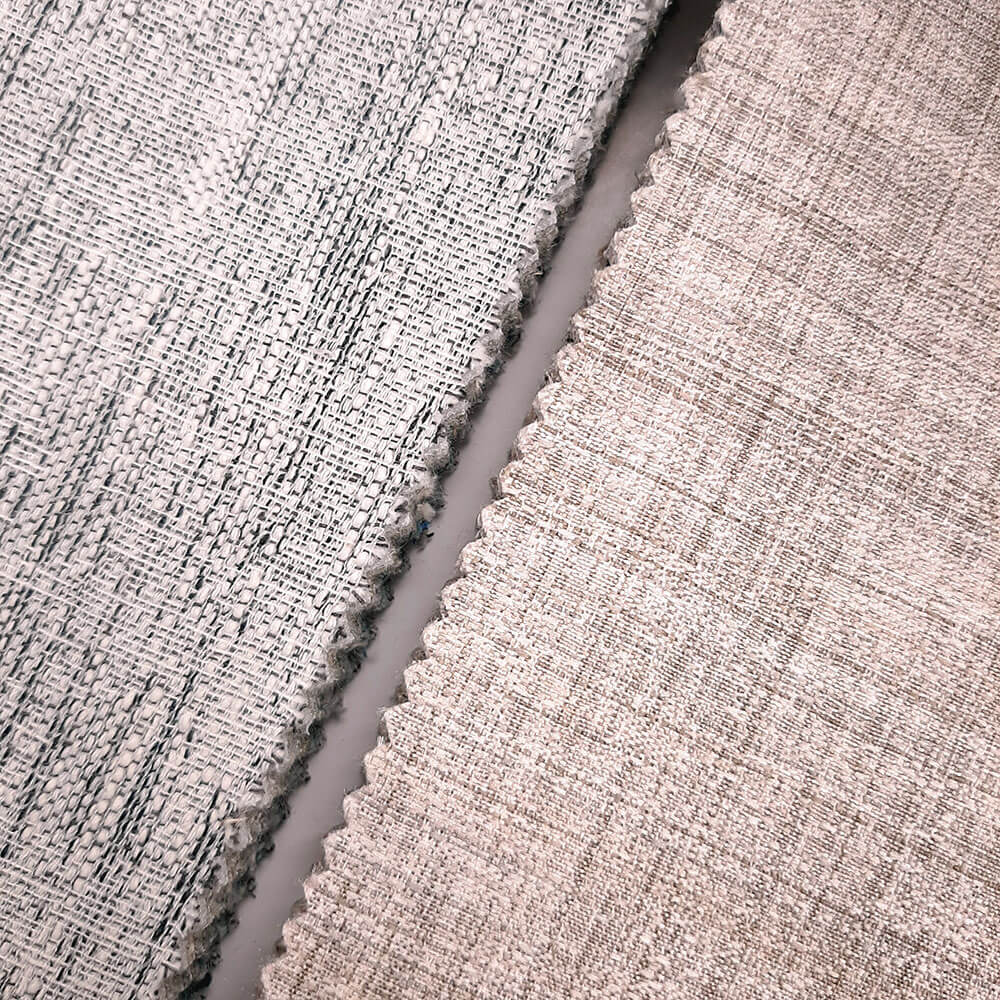
Left to right: Sand Pier Dove Grey, Key To Comfort Seal
Textured Solids
Textured solids are made from multicolor yarns that give more dimension, creating subtle interest and depth around your windows. Textural variety helps break up a monotone room, while the slubs and variegated thicknesses in the yarns create a more casual look.
Textured solids allow for varying color without committing to a large pattern — and they make up beautifully into window treatments.
Sheers
Sheer fabrics are made with thin yarn or a low-density weave. These translucent fabrics beautifully diffuse and filter light while covering windows without blocking your view. For nighttime privacy, add fabric panels in front of the sheers on a double rod.
Lighter colors create a look of airiness while darker sheers create a deeper mood. Embroidery, jacquard, and print constructions are all available as decorative sheers.
The lightweight quality of sheers makes them great for pleated or ripplefold drapery styles. However, be aware that not all sheers can be made into soft roman shades or some drapery styles.
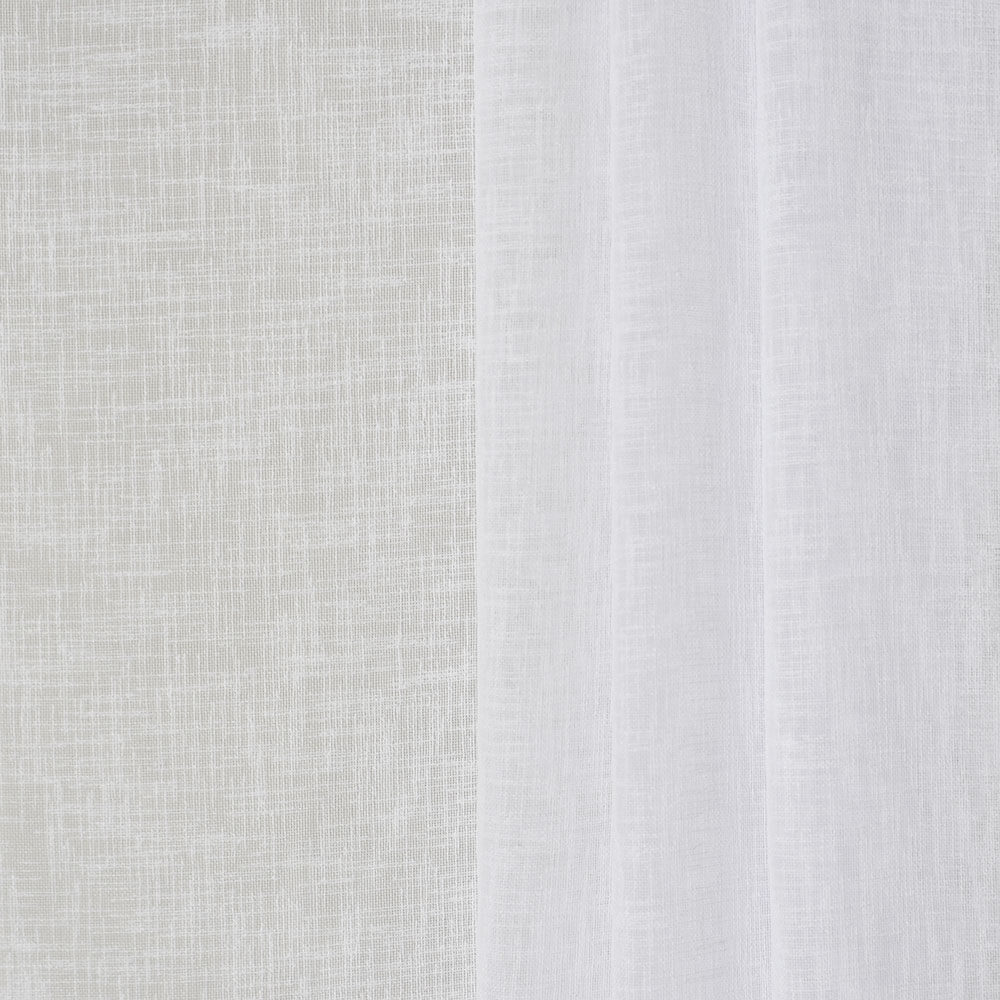
Afternoon Sunlight White
Carole Fabrics introduces two new decorative fabric collections each year, consistently offering each of these fabric construction types in an array of colors and styles. These beautiful additions to our fabric library are carefully curated after extensive research of current trends and customer needs.
If you have an account with Carole Fabrics, login to carolenet.com to view and order any of our available fabrics at your convenience.
If you don't have an account yet, please fill out the form on our Contact page for more information about becoming a dealer.
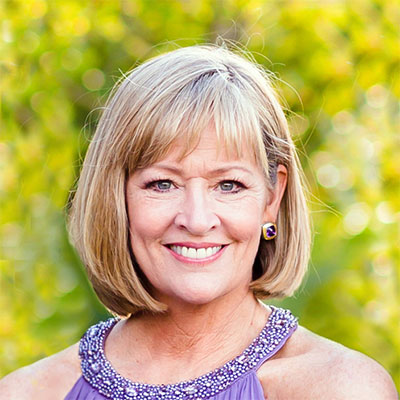
Susan Pfingst
National Training Coordinator
With over 35 years in the Home Design Industry, Susan brings her extensive experience in design and sales. Training is her passion and she looks forward to sharing her insight!

